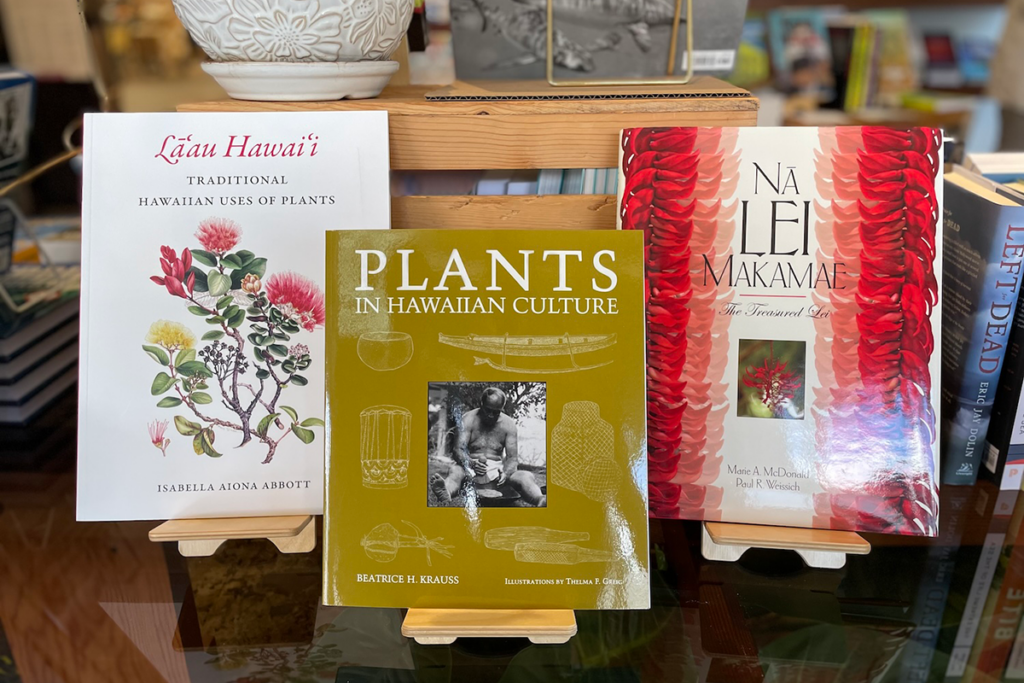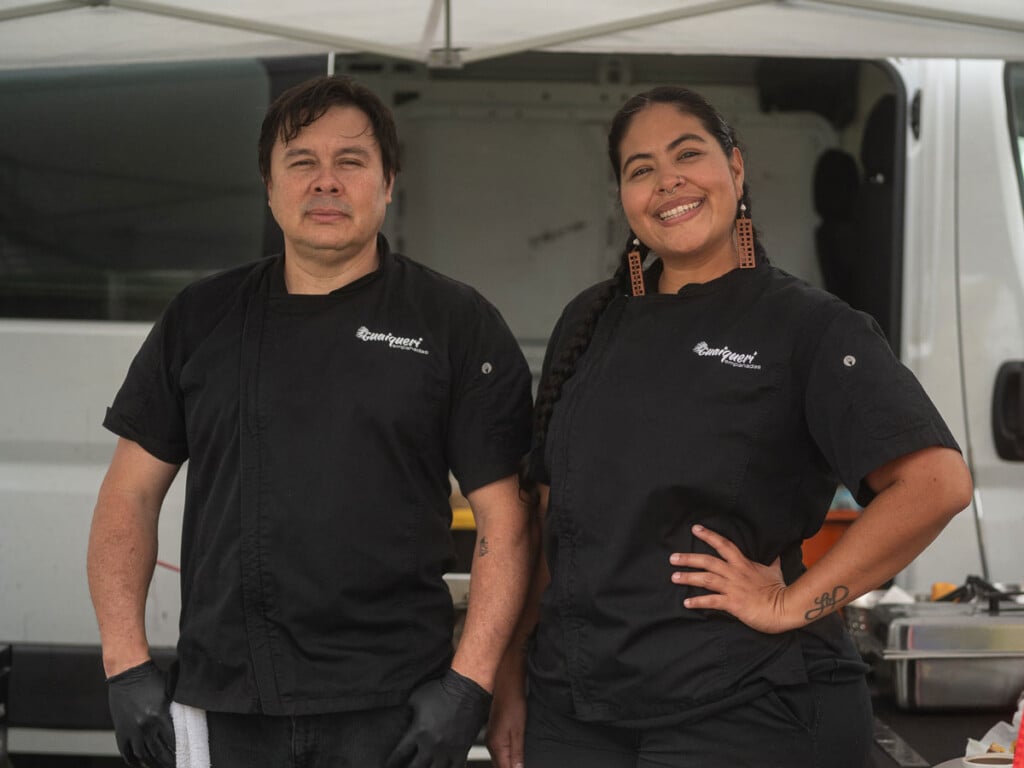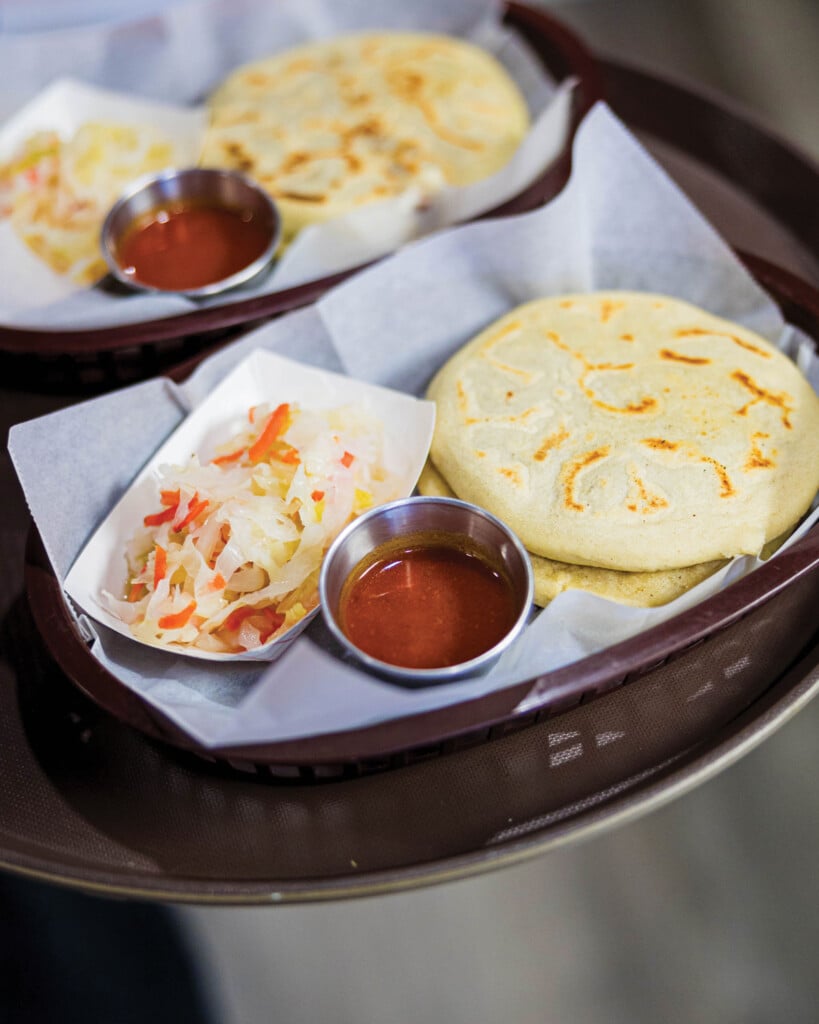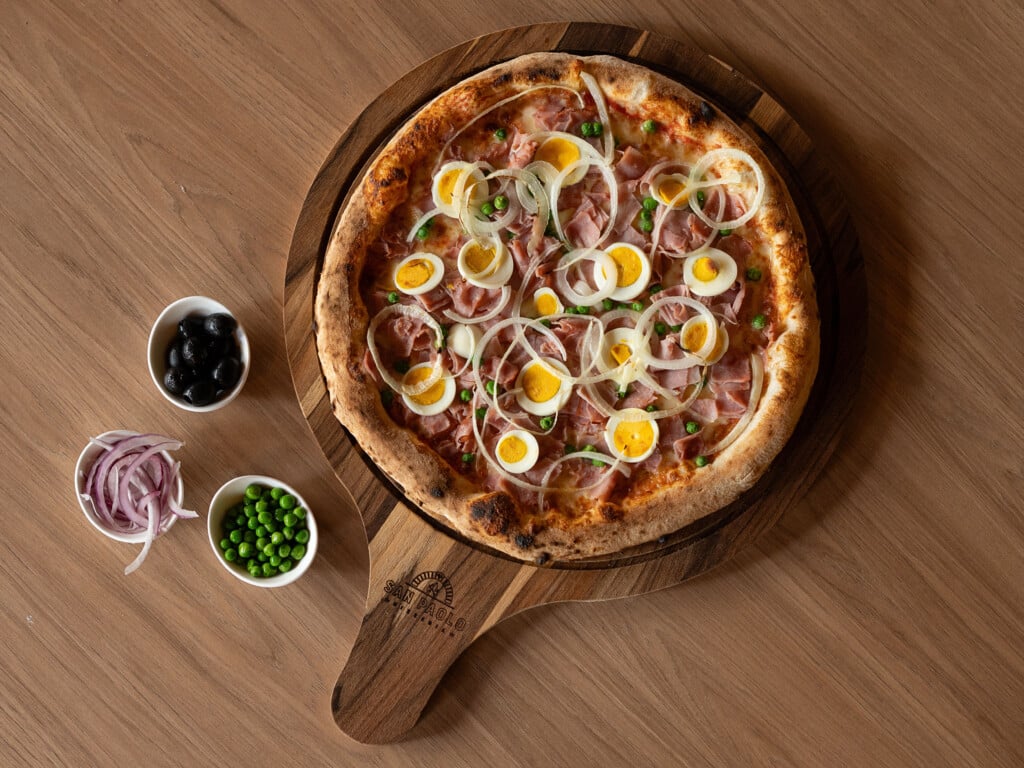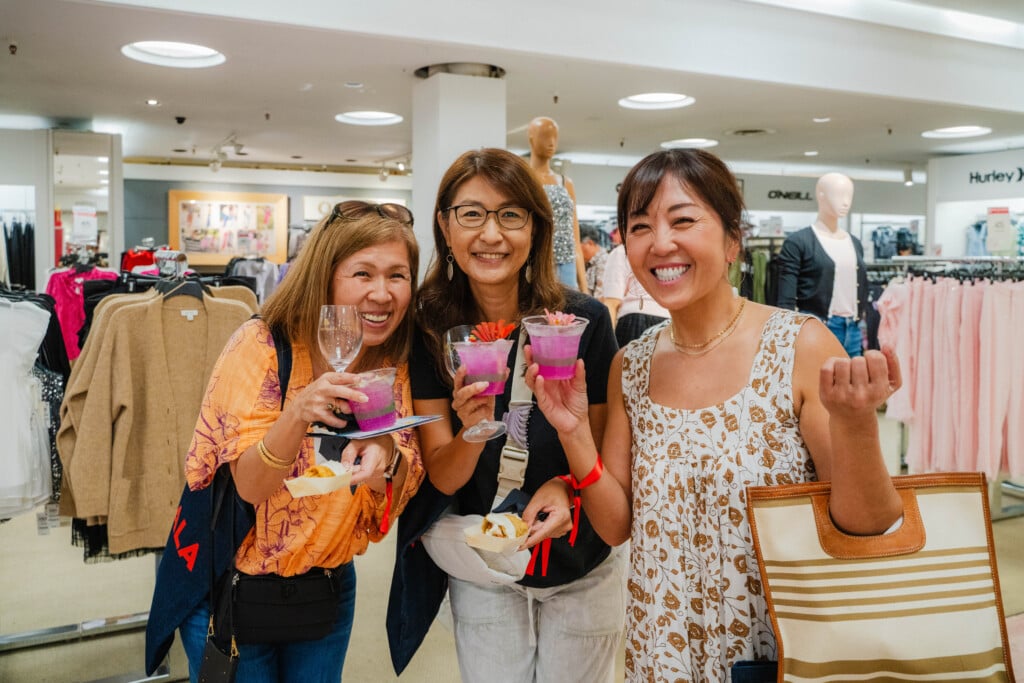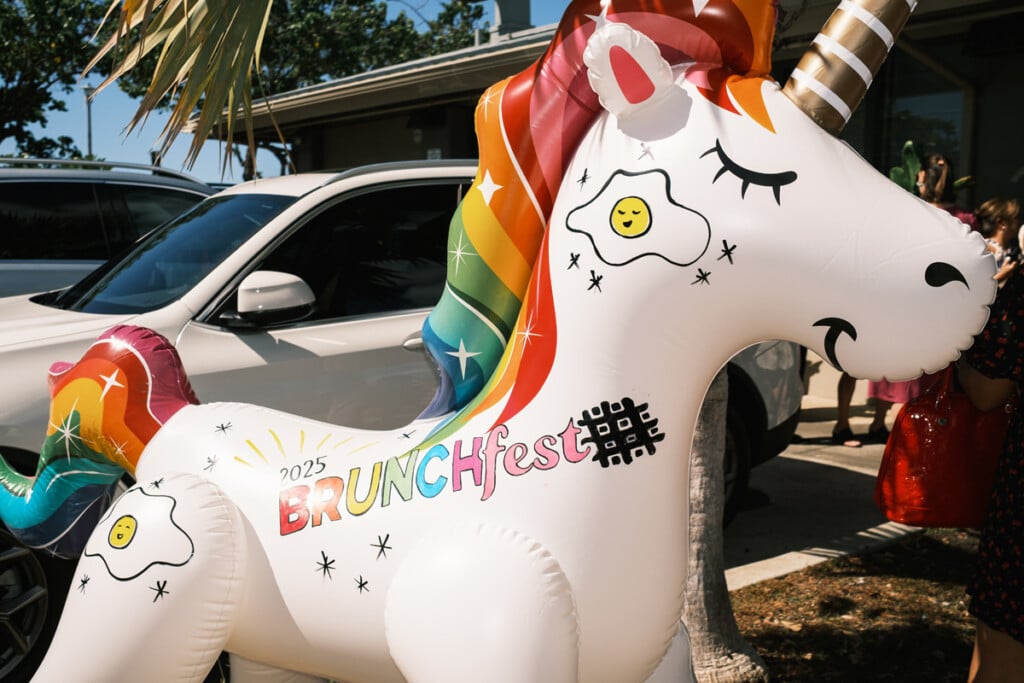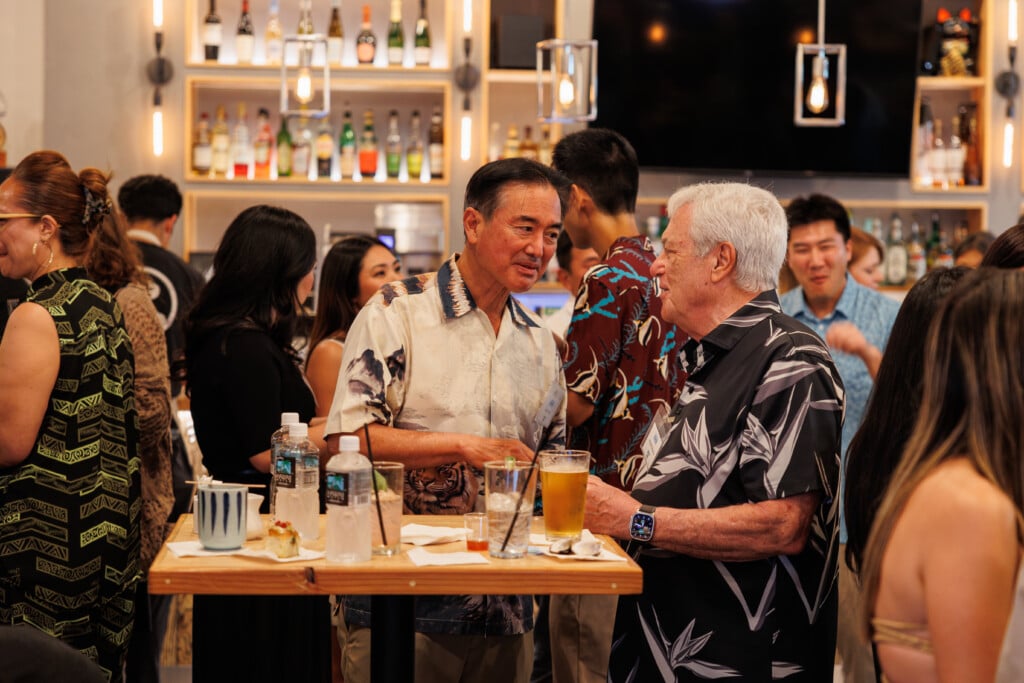The Sheraton
Waikïkï has the largest hotel ballroom in Hawai’i, 26,000 square feet, or 20 times
the size of the average Hawai’i single-family home. To see it full of food-from
steaks sizzling at the entrance to 12 kinds of Spanish olive oil arrayed near
the back wall-is a sight that both stimulates and daunts the appetite.I have
no idea where to start. So perhaps the best thing would be to tell you where I
am and what I’m doing. I am at the Y. Hata Annual Food Show. It’s for people
who work in, and buy for, restaurants and other food service operations, from
hospitals to schools. A friend of mine got me on the invite list, because in all
the years I’ve been writing on restaurants, I’ve never actually taken this peek
behind the scenes. I stop at the first booth I come to, No. 400, where I
strike up a conversation with Bob King, who carves a perfect slice from what he
calls an airline turkey breast. The breast is boneless except a little drumette
that’s been trimmed, but left intact. Like a little wing. “Oh, that’s just for
eye appeal,” says King. “First-class meals on airlines years ago had chicken breasts
cut like that. We extended the idea to turkey.”  | Desserts
from Hans Weiler, part of Y. Hata Food Show Courtesy Y. Hata |
King
has flown in from Phoenix to represent House of Raeford (Motto: “Poultry Products
for Profitable Operations”) at today’s show. The man can talk turkey. This airline
breast is a perfect for any carving station, he insists, because it contains 18
percent of an injected solution of water, salt, butter flavoring. “This turkey
breast just performs better,” says King. “It doesn’t dry out on a buffet line,
it’s perfect for a carving station. At $2.50 a pound, it’s your best value in
protein. Protein prices are going through the roof.” I feel alarmed by much
of this information, but the turkey actually tastes good, juicy, like it just
came out of the oven and rested a few minutes, not like it’s been under a heat
lamp for hours. It’s unlikely you or I will ever buy an airline breast of turkey
with 18 percent fluids added. That price is wholesale and you have to buy a case,
though admittedly the product has a shelf life frozen of more than nine months.
It’s a specific product for a specific market, which isn’t you and me. It’s the
chef who needs a buffet line full of quality protein that won’t dry out under
a heat lamp. As I wander from booth to booth, I am staggered, at first,
how tailored to restaurants all these products are, and, second, just how much
stuff restaurants have to buy. No one has a precise figure, but according to Y.
Hata president Larry Vogel, restaurants in Hawai’i spend $250 million or more
annually. Restaurants need everything: bread and butter plates (on special today,
three dozen for $27). Premium corn/canola fry oil in 35-pound packs. Prime New
York strip steak (about $7 a pound in cases that average about 50 pounds). Pringles
Snack Stacks in a 23-gram red and green plastic tubs. These are, says the brochure,
perfect for schools and sub shops, with a 10-month shelf life. Today, they are
priced two for one. For each of your locations, should you have many, you can
buy two cases of Snack Stacks, and Proctor & Gamble will rebate the price of one
case per location. There a 60 Snack Stacks in a case. Y. Hata, whose show
it is, racked up $82 million in sales in the fiscal year ending this month. The
firm is what’s called a broadline food service distributor, which means it sells
stuff you’ve heard of (steak, shrimp, soup mix) and stuff the existence of which
you never had a clue. Stuff like QimiQ, which we will get to later. The
company has an interesting history. Yoichi Hata immigrated to Hilo in the late
1890s. In 1903, he and his wife Naeko Hata opened Y. Hata in 1903, distributing
wholesale products out of a garage. The company prospered, despite the fact
that Yoichi Hata was interned during World War II. Five of his children-Yukiko,
Minoru, Susumu, Akira and Frank-stepped in to run what became eventually a statewide
operation. Frank Hata, 79, is still chairman of the board.  | Perhaps
you thought restaurants made all those fancy sauces under your dessert. Nope,
they come in squeeze bottles, see below. photos courtesy lyons magnus |
For
almost a century, Y. Hata remained a family-run business. But in 1998, Frank Hata
talked Laurence Vogel into joining the company as president and CEO. Vogel, originally
a New York lawyer, had come to Hawai’i to work for the Duty Free Shoppers Group
Ltd. He served as Duty Free’s president until 1991, when at age 54, he retired.
He had promised himself to devote 10 percent of his life to charity and spent
the next seven years doing good works-raising money for the Hawai’i Theatre and
the Honolulu Symphony, serving on the board of non-profits. Vogel extracted
a pledge that he could actually run the company, pay the employees better (“This
is a thin-margin business and the employees always were last in line.”) and invest
every penny of the profits into expanding the business. He hired a corporate chef
(there are now six chefs on staff), acquired a restaurant equipment business (MidCity),
a pastry supply business (Hans Weiler Foods) and gourmet food line (Island Epicure). Unlike
most food distributors, Y. Hata has a retail operation, open to the public, at
285 Sand Island Road. If you go there (7:30 a.m.-4 p.m. Monday-Friday, 7:30 a.m.-12
p.m. Saturdays), you’ll find yourself dwarfed by all the trucks in the parking
lot. The trucks are there for a reason: Restaurants don’t go to the store, the
store comes to them. Which is why Y. Hata throws this party every year,
inviting manufacturers and distributors, giving out samples, doing demonstrations,
anything to get restaurants to browse new products. I wandered up and down
the aisles amazed. Restaurants buy things you never think about. For instance,
you know those portable bars, the kind they set up at the edge of a function room
during an event and charge you $5 for a glass of wine that didn’t cost that much
a bottle? Those bars cost $990, so it’s not all profit on the wine. Did
you know that those infrared-lamp carving stations, like the one with the airline
breast of turkey, cost $345? They look very nice, but it’s hard to imagine needing
one at home. Or how about a rice cooker? A large home model will cost you
$30 to $40 and make eight to 10 cups. But you can, if you are planning on producing
a vast quantity of musubi, make 55 cups of rice at a time, with a gas-powered
Rinnai rice cooker, for $245. Of course, the more stuff you have in a restaurant,
the more you need to keep it clean, which will require purchasing degreasers,
sterilizers and dishwashing liquids. You can, if you wish, purchase an entire
Scotch-Brite Quick Clean Griddle System, including cleaner, scrubbers and squeegees. Fortunately,
most of the stuff for sale is more edible. A year and a half ago, Y. Hata formed
Island Epicure in partnership with Karen Syrmos, who probably knows more about
cheese than anyone in Honolulu. Syrmos grew up in Holland and France, attended
college in Florida, where her parents had bought a house to escape the cold Dutch
winters. In the course of her career, she worked for Grolsch, the premium Dutch
brewer, trained as a chef in France, had a restaurant, started a company selling
pates and gourmet sausages. Her husband took a job teaching engineering at the
University of Hawai’i (he’s now associate dean). For five years, Syrmos
commuted back and forth from Honolulu to Atlanta, where her company was based.
“Then I got pregnant, and thought it would be nice to have mommy and daddy in
the same place,” she says. She sold her business and moved. Syrmos loves
cheese, olive oils, all sorts of artisanal, high-end food products. For a while,
she worked for another food distributor. “It wasn’t a good fit,” she says. “They
were used to moving whole boxes of beef, and I wanted them to break down a case
and deliver one bottle of truffle oil to a restaurant.” Then Vogel approached
her to join Y. Hata. “I said, no way, you’re even bigger,” recalls Syrmos. But
the two, in her terms, “partnered up.”  | Chef
Rudi Mitsche preaches the wonders of QimiQ, which is more a kitchen technology
than a food. Photo: John Heckathorn |
The
results are displayed in deli counters (show price $2,495), along the back wall.
There are cheeses like Prima Donna, an aged gouda that’s almost like Parmesan.
Bigio, an Italian sheep’s milk cheese ripened under a coating of ash. Caciotta
deli Boschi, a sheep’s milk cheese rich with truffles and porcini mushrooms. Halloumi,
a goat cheese you grill until it turns golden on the outside and soft and runny
on the inside. Plus, there’s duck from Grimaud Farms-smoked magret (duck
breast), duck confit, duck prosciutto. And there’s a vast display from Casa Pons,
a Spanish olive oil producer. Albert Savarese, Casa Pons’ director for United
States sales, has flown in from New York to urge people to taste his olive oils
and his vinegars, including his balsamic cream. You know that thick, slightly
sweetened reduction of balsamic vinegar that shows up in dots and swirls, adding
flavors to dozens of restaurant dishes? I always assumed sous chefs labored over
a hot stove with a small pot, carefully reducing the balsamico. You can, however,
simply buy it. On my way up another aisle, I happened across the Lyons Magnus
booth. You know those stripes and dots and swirls that now almost always decorate
the plate of your fancy restaurant dessert? Apparently, the pastry chef no longer
has to make those fruit purees and chocolate syrups. A restaurant can buy a 12-pack
of designer dessert sauces (caramel, raspberry, mango, kiwi, white and dark chocolate)
in handy squeeze bottles. Of course, I was not so naïve to assume that
all restaurants made everything from scratch, but I was amazed by what you could
buy. Teresa Chung of Unilever Bestfoods showed me bags of Knorr freeze-dried soup
mixes. “It beats canned and it’s one third the cost of frozen,” she told me. You
add a gallon of water to the bag of soup mix and have soup that costs about 7
cents an ounce. At the show, I saw icing mixes made of water and partially
hydrogenated vegetable oil. White plastic bags of a product marked “REAL mashed
potatoes, just add water!” Frozen liquid egg products and pre-cooked scrambled
eggs. Fully cooked chicken wings in spicy batter, called Zippity Doo-Wa Wing Ditties.
But there was plenty of real food as well, even canned and frozen. Walter
Domingo of Rainbow Sales let me taste his remarkable shrimp and frozen farm-raised
Chinese clams. “Of course, they’re frozen,” he said. “There are only two ways
to buy seafood: alive or frozen. If it’s not still alive, it better be frozen
or it’s deteriorating.”  | Jay
Kirschner flew in from Colorado to grill—and promote—Sterling Silver
meats. Photo: John Heckathorn |
There
was even good canned product. I stopped by a booth that was selling chopped Arctic
surf clams with Greenland cockles. Cockles sounded like something from a nursery
rhyme, so I had to stop and ask Terry Delaney, who’d flown in to represent Clearwater,
a Canadian seafood company. He showed me big color pictures of both the clams
and their close kin, the cockles. He went on about how the clams were harvested
in a sustainable manner, in the deep ocean. How they were salt-water cleaned,
because the main product is the little red-tipped foot that’s frozen within an
hour, to end up as hokkigai in sushi bars. And how the clams were washed, culled,
shucked, chopped and block frozen while still at sea. Delaney was so enthusiastic
about his product, he had me nodding along. Suddenly, he thrust a 51-ounce can
of clams in my hands. It would have been impolite to refuse, but a 51-ounce can
is a somewhat awkward gift. I read the recipe for clam chowder on the back. At
the bottom, where the recipe usually says, “Serves four,” it says, “Serves 20.”
I am staring at the can as I type, not at all sure what I am going to do with
it. Jay Kirschner, who is a Certified Culinary Sales Professional, though
I didn’t know there was such a thing, flew in from Colorado to represent Sterling
Silver meats. He was grilling all afternoon, but took the time to discuss the
difference between cuts of beef, between prime and choice beef (marbling mainly),
about how restaurants get better beef than most consumers. They insist on prime
and pay more for it. His New York was good, but it was his pork that was a revelation-all
natural, hand selected for texture and flavor, amazingly juicy. “What is this?”
I asked after the first bite. “Our pork chop,” he said. But the product
that most got my attention was QimiQ. Early on in the show, I ran into Rudi Mitsche,
who I’d met years earlier when he was chef at Ship’s Tavern at the Sheraton Moana.
Mitsche is an imposing figure, tall, stout, with a sweeping handlebar moustache.
He’s an old-style chef, resplendent in whites, not the sort of guy who’d cook
in a baseball chap. He now works for Y. Hata. I had to come to his 3 p.m.
demonstration, he said. He had a product that would revolutionize the kitchen.
Mitsche is persuasive, so at the dot of three, I was standing in front of his
demo table, as he opened a box of QimiQ. It rhymes with gimmick. QimiQ,
to put it bluntly, is white goo. It doesn’t quite look like any food you might
recognize, though it’s made 99 percent of milk, and 1 percent from gelatin, through
a process called UHT for ultrahigh temperature processing. QimiQ is low-fat (compared
to cream or butter, anyway), entirely natural (not counting the patented processing)
and stable for months at room temperature. It is a kind of food technology, not
really a food.  | Photo
Courtesy: Y. Hata |
“This product will replace
eggs, cream and butter,” says Mitsche to the assembled crowd, with evangelistic
fervor. He’s good. He whisks lemon juice into the QimiQ. “See, it’s acid stable.
Cream would split. You can make cream sauces, butter sauces, hollandaise, dressings.” He
whisks in just a little truffle oil. QimiQ is neutral, takes on the flavor of
the more expensive ingredient. Mitsche whips it up into mayonnaise. “Why make
your own mayonnaise when you can buy it?” asks Mitsche rhetorically. Because,
he asserts, Qiminaise retains moisture, doesn’t make the bread in a tuna sandwich
soggy. “If you have finger sandwiches left over today, they will be soggy tomorrow.
With QimiQ, they will be fine.” Mitsche is ready to make almost anything
out of QimiQ-terrines, soups, sauces, scrambled eggs that won’t dry out or discolor
on the buffet line, eggs that can be frozen and reheated without problem. QimiQ
is so neutral in flavor, it works for desserts. Mitsche pours in melted chocolate,
whisks up a chocolate mousse. I taste it. It’s almost unnaturally smooth, but
it tastes like mousse. “And it will stay moist longer, and if you put it in tartlettes,
they won’t become soggy.” QimiQ, Mitsche proclaims, will change restaurant
kitchens forever. I don’t know yet whether that’s a good or bad thing. As I was
leaving, he slipped me an aseptic Tetra Pak filled with 250 grams of QimiQ. I
have yet to figure out what to do with it. Maybe something with clams. |






